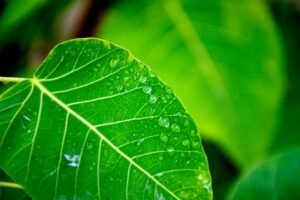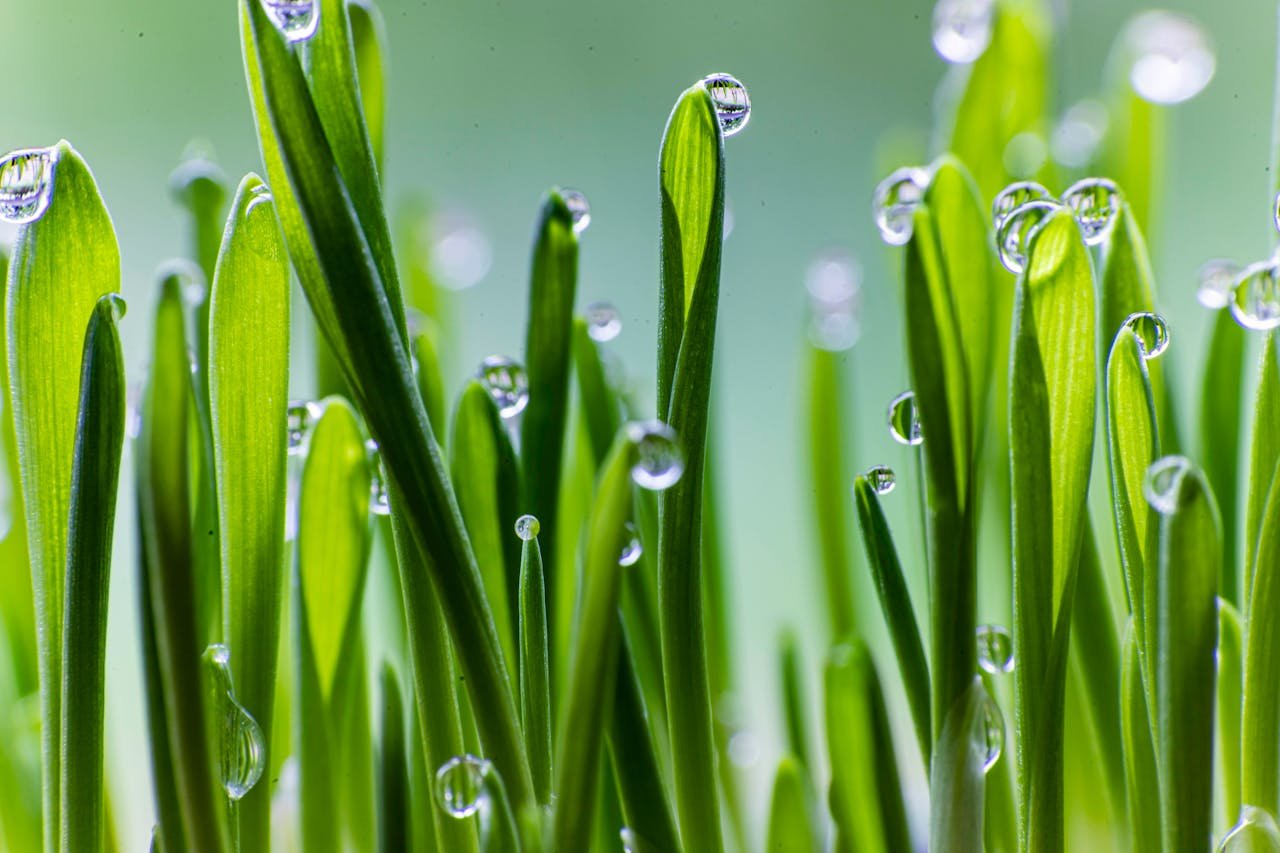Wet leaves are the main feature of autumn. It’s fun to rake them into piles and then jump into them. Dogs, kids, and even adults love playing in the leaves. The author Albert Camus said, “Autumn is a second spring where every leaf is a flower.” However, fall leaves can become a problem when they fall off trees and end up in your pond.
While dry leaves are easy to handle, damp leaves in your pond can be more challenging.
Do You Have to Mow?
Leaves contain nutrients that can be reused in the soil. Problems arise when leaves become so dense that they smother your lawn and smaller plants in your garden. So, how many leaves are too many? University researchers have developed guidelines to help determine whether you need to rake your lawn.
You don’t need to rake if leaves cover less than 50% of your lawn. However, using your mower to cut the leaves into smaller pieces is suggested. If more than 50% of your lawn is covered, it’s time to grab the rake!
Run Your Lawn Mower
For lawns with 50% or less leaf coverage, use a lawn mower to break down the leaves and return organic matter and nutrients to the soil. Simply run the mower over the leaves.
A few passes may be necessary for larger leaves like those from maples or oaks. Small pieces of leaves will settle between grass blades and decompose over time. If your mower has a bagging attachment, you can collect the leaves efficiently.
Add these collected leaves to a compost pile, use them as mulch to protect plants during winter, or dispose of them through local yard waste collection programs.
What to Do With Wet Leaves

After removing leaves from your pond, what should you do with them? Wet leaves are harder to manage than dry ones, but you can turn them into garden gold with some effort.
Curbside Collection
Depending on your location, your recycling or trash service may collect leaves in the fall. Check if your area offers this service and whether specific bags are required. Most leaf collection programs require leaves to be placed in biodegradable bags.
Leaf Mold
Wet leaves are excellent for making leaf mold, which adds nutrients to soil and improves water retention in gardens. Leaf mold is created by letting wet leaves decay over time. Collect wet leaves in autumn; by spring, you’ll have nutrient-rich material for your garden.
To create leaf mold, place leaves in a compost bin made of wood, plastic, or wire fencing. Keep the pile moist, adding water as needed. Sprinkle a little water with each new layer of leaves if they aren’t already wet.
Leaf Compost

Leaf compost is even healthier for soil than leaf mold, though it requires more effort. It’s rich in minerals, improves soil structure, aerates clay soil, and adds moisture to sandy soil. Create leaf compost by layering green organic materials with wet leaves, such as kitchen scraps and grass clippings.
Keep the pile moist and turn it every three weeks to aerate. By spring, you’ll have high-quality compost ready for your garden.
Leaves and Pond Owners
While leaves symbolize autumn, they can be troublesome for pond owners.
As leaves decay in ponds, they degrade water quality, add excessive nutrients, and form sludge at the bottom. Removing leaves while they’re still floating on the surface is important. Wet leaves can be composted or used to create leaf mold, improving soil structure and nutrient content.
Wait for the Last of the Leaves
It’s tempting to start raking as soon as leaves fall, but waiting until most leaves have fallen saves time. Break the task into smaller parts by raking one section of your lawn at a time.
Choose the Right Rake
Comfort and ease of use should guide your choice of rake. Select one with a handle long enough to allow you to stand upright while raking. Rakes with sturdy steel tines are usually better than those with plastic tines.
Look for rakes labeled “no clog” to reduce the need for frequent cleaning. Wearing gloves can protect your hands from blisters.
Don’t Rake Wet Leaves
Avoid raking when leaves are wet from rain or dew. Wet leaves are heavier, stick together, and are harder to rake. They can also clog leaf vacuums or shredders. If you must bag wet leaves, remember that the added moisture will make them heavier.
Use a Leaf Vacuum

If you have a huge area to rake around, consider buying a leaf vacuum to help you save time, energy, and muscular pain. Leaf vacuums use suction to gather leaves into bags to be disposed off easily.
Certain leaf vacuums also cut leaves, allowing you to put more in bags for disposal or making it easy to apply leaves to mulch your gardens. You can use a handheld leaf vacuum or push it behind.
Rake Onto a Tarp
Set a large tarp on the ground before you begin raking to ensure that it is easy to remove the leaves after you’ve finished. You can simply rake the leaves onto the tarp and swathe all edges to gather them.
If you don’t wish to put the leaves elsewhere in your garden, you can use the container to put them in disposable bags or carry the entire tarp to a nearby waste drop-off location.
Stomp on the Leaves
To avoid the annoyance and frustration of raking up piles of leaves that wind blasts around again, take a stomp to the piles. If it’s a stormy day or you’re planning to break from raking, flattening your piles of leaves can keep them in place until you can take them down.
Work in Sections
Like any other task that requires planning, raking your yard without a strategy could be overwhelming and daunting. Instead, plan to divide the yard into smaller sections, making the task less daunting.
In each section, you should rake the leaves section into smaller piles, taking care to collect the leaves before going to another section. Repeat this process until the yard is fully raked, making breaks as necessary.
FAQ
Why do the leaves of plants look damp?
Water droplets on leaves are normal and similar to sweating in humans. When a plant has excess moisture, it releases it through guttation.
What can you do with wet leaves?
If wet leaves cannot dry out due to continuous rain, gather them into piles and dispose them off. Wet leaves can be hazardous in pathways, so it is best to remove them quickly.
Why do my plant leaves look wet?
Have you noticed an even pattern of water droplets on the leaves of one or more home plants? This is a natural occurrence and can also be observed on indoor plants. It is also known as guttation. The process of guttation occurs frequently in plants grown outdoors.

